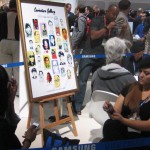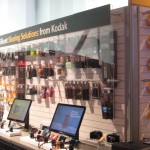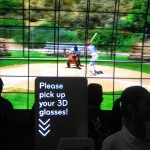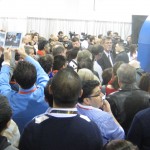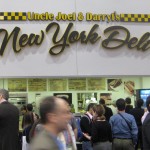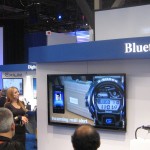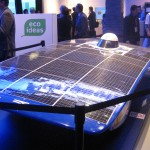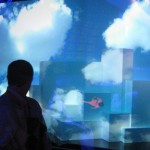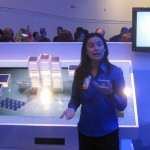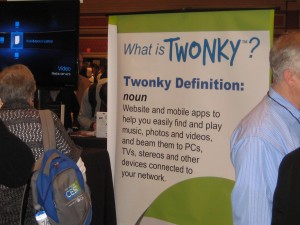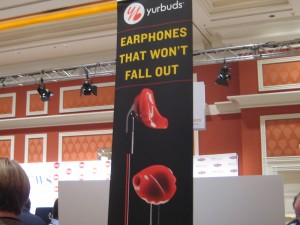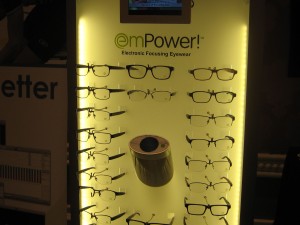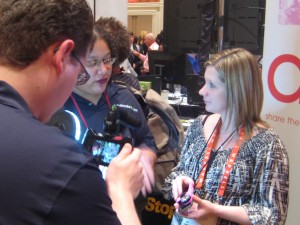The highlight of my final day at CES 2012 was a visit to Eureka Park, the area at the Venetian dedicated to new products and startup companies. Here are a few items of particular interest.
Cubelets. Designed for kids to learn programming, Cubelets are magnetic blocks that can be snapped together to produce complex reactions. For example, the brightness block determines the available amount of light and turns on the flashlight block, then the distance block tells the driving block to move the whole structure down the table. You can watch a really silly video since my photo didn’t work out well, and you can also preorder an (expensive) prototype kit to ship in March.
Postcard on the Run. An iPhone or Android app that lets you choose a photo, write a message (including your written signature) then mail it as a physical postcard to an address in your address book. I tried it out and the app was going to charge me $1.99 (including a scratch n sniff layer at 50 cents extra) which is not a bad price compared to buying and mailing a postcard from the post office.
Twykin.com. These guys are doing a mashup of bulletin boards, FAQs, Wikipedia type user written articles and using it to develop as a test case the world’s first crowdsourced customer service application. You’ll have to trust me (and I will have to trust them) on this one since their developer was in an accident just before CES but they promised to get back to me and I’ll do a full piece at some point in the near future.
Blippar. Instead of shooting a QR code with your smartphone that takes you to a website, the Blippar app allows you to interact directly with an augmented reality application. The examples shown by this UK company include a ketchup label that allowed you to turn the label into pages you can flip through, and a retail page in which you can order directly from the app.
SurfEasy. This is a USB dongle that fits into a credit card-size carrier. On it are your browser preferences and passcodes with bank-level encryption so you can just plug into a public device and go right to work. There’s no storage on the device, but it comes with 2 GB of cloud storage. It’s a bit pricey at $60, but solves a problem for folks who use public computers in what looks like a complete and well thought-out execution.
That’s it for CES 2012. See you next year.
